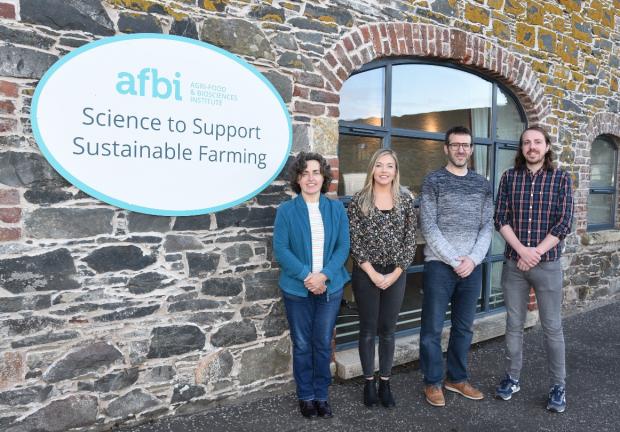Lowering emissions of greenhouses gases from pig systems is important, but in Northern Ireland lowering the levels of nitrogen, phosphorus and ammonia is of equal if not more importance, a leading expert on the pig sector has said.

Dr Ramon Muns, who leads the pig research programme at the Agri-Food and Biosciences Institute (AFBI), has highlighted a range of changes that can be made to support greater sustainability in the sector.
His assessment comes on foot of a recent report by the Centre for Innovation and Excellence in Livestock (CIEL), led by AFBI’s Professor Elizabeth Magowan, which has highlighted key mitigations that the UK’s pork industry can undertake to reduce GHG emissions.
The research, delivered in collaboration with scientists and researchers from Queen’s University Belfast, Scotland’s Rural College (SRUC) and Rothamsted Research, provides pragmatic advice to farmers and producers in a range of sectors – including the pig sector.
Commenting on the difference that pig farmers and producers can make, Dr Muns said:
“While pig systems are responsible for relatively low levels of greenhouse gas emissions compared with other livestock systems, it is important to keep working towards greater sustainability in pig production.
“Emissions of nitrogen, phosphorus and ammonia from pig systems remain a key challenge for the sector. As the recent CIEL report has highlighted, better feed use efficiency (i.e. how well the pig and the herd as a whole utilise feed) and reducing feed wastage on farms are key strategies to reduce overall emissions from pig production. However the ingredients in the diet itself will have the greatest impact on lowering both the carbon footprint of the system as well as the nitrogen and phosphors excretion from the pigs”.
Highlighting the major changes pig farmers can make Dr Muns went on, “Lowering crude protein levels in a fattening pig’s diet will reduce nitrogen excretion and ammonia emissions. Data from our research at AFBI shows that, on average, there is a 10% reduction in ammonia emissions for every 1% reduction in dietary crude protein. However, any reduction in dietary crude protein level should be discussed with an expert nutritionist to ensure diets are balanced correctly for amino acids to prevent an impairment in the growth rate and efficiency of pigs.”
Pork Sector

Mitigations against emissions in the sector can usually be divided into three distinct areas, mitigations that relate to the animal, to the feed and to the manure.
The CIEL report lays out nine options for pig farmers and those in the pork sector that if implemented partly or wholly could help make a significant difference to the GHGs emitted into the atmosphere. These were then modelled to see what options had the greatest impact. It should be noted that strategies associated with reducing the environmental impact of pig farming have the largest impact when focused on finishing pigs because pigs at this stage consume the highest proportion of feed and use nutrients less efficiently compared to pigs at other stages of life.
Strategies that focus on improving efficiency, including improving the general health of pigs and genetic improvements to drive efficiency and growth can help deliver reductions in methane and nitrous oxide production, two potent green house gases.
However the most important change that can be made is to replace soybean meal which has been sourced from areas of deforestation, with protein ingredients derived from land practices which have not involved deforestation or other major changes. When land is converted from forest or grassland to cereal land, its ability to sequester carbon is greatly reduced and the growing of cereals itself often emits the potent greenhouse gas nitrous oxide. Therefore using ingredients from land practices which have not changed over the past number of years, which could include soyabean as well as peas and rapeseed, will lower the carbon footprint of a pig system
Other feed related options for pig producers include improving feed processing technologies and the inclusion of specialist ingredients such as synthetic amino acids, enzymes and probiotics in animal diets, precision feeding and management strategies and reverting pigs to their traditional role as recyclers of ‘by’ products can all help reduce the emissions from the sector and will likely become of increasing importance in the coming years.
The final area where GHG emissions can be managed for pig producers is in terms of manure management. Covering stores and lowering the pH of slurry can help reduce emissions as well as reducing emissions of ammonia and other odours. The application of manure using low emission spreading can also help reduce nitrous oxide emissions into the atmosphere.
The report contains many of these mitigation measures modelled on a farm and has shown very positive results.
Latest news
- AFBI issues Nematodirus warning – Spring 2025 11 April 2025
- Managing Nature Based Risks to the UK Economy and Opportunities for Green Finance 08 April 2025
- AFBI Hillsborough host AERA committee 27 March 2025
- The Omics Days Conference 27 March 2025
